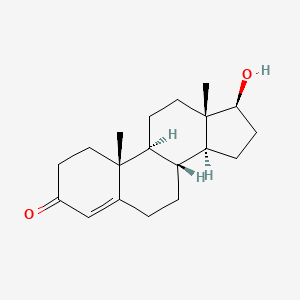|
Name: Anabolic Steroids
Type: Androgenic steroid
AKA: Any substance meeting the definition of anabolic steroid as set forth in 21 CFR 1300.01

|
|
II. Natural Derivative
Synthetic substance, no natural derivative
 |
|
III. Chemical Profile (IUPAC name)

|
|
IV. History
Anabolic steroids are synthetic derivatives of testosterone used to promote muscle growth and enhance athletic performance. They have been used since the mid-20th century and are commonly associated with bodybuilding and competitive sports. The potential for abuse, adverse health effects, and ethical concerns have led to strict regulation and control of their use in many countries.

|
|
V. Legal Information
Anabolic steroids are classified as controlled substances in many countries, including the US, where they are listed under Schedule III. Their use is regulated due to concerns about misuse in sports and bodybuilding, as well as potential health risks. Globally, the trend is towards strict controls to prevent abuse and manage the health implications of anabolic steroids.
US Federal Schedule - III
Schedule III drugs, substances, or chemicals are defined as drugs with a moderate to low potential for physical and psychological dependence. Schedule III drugs abuse potential is less than Schedule I and Schedule II drugs but more than Schedule IV. Some examples of Schedule III drugs are: products containing less than 90 milligrams of codeine per dosage unit (Tylenol with codeine), ketamine, anabolic steroids, testosterone.
Key US Federal Policies:
Controlled Substances Act. Public Law: Public Law 91-513 (text can be found on GovInfo) (https://www.dea.gov/drug-information/csa). Date enacted: October 27, 1970.
Designer Anabolic Steroid Control Act of 2014. Public Law: Public Law 113-200. Date enacted: December 19, 2014. |
|
VI. Physical Effects
Anabolic steroids are synthetic derivatives of testosterone used to enhance muscle growth and performance. As uppers, they increase muscle mass and strength. Short-term effects include improved physical performance, while long-term use can lead to cardiovascular problems, liver damage, and hormonal imbalances. Overdose risks involve severe health issues. Safe use involves medical supervision. Recent research highlights their effectiveness for muscle growth and the associated health risks.  |
|
VII. Psychological Effects
Anabolic steroids impact neurotransmitter systems, leading to mood alterations and cognitive effects. Immediate effects include increased aggression and altered mood, while long-term use can result in severe psychological issues such as mood swings, aggression, and cognitive decline. Research focuses on their impact on mental health, hormonal balance, and long-term effects.
 |
|
VIII. Culture
Anabolic steroids, developed in the mid-20th century, are used for muscle building and performance enhancement. They have significant cultural impact, particularly in sports and bodybuilding. Historical texts note their use in athletic performance, and they are associated with debates over fairness and health risks. Proponents argue for their benefits in muscle growth and recovery, while opponents highlight issues of abuse, health risks, and ethical concerns in sports. Their use is both recreational and medicinal, reflecting broader debates about performance enhancement.
 |
